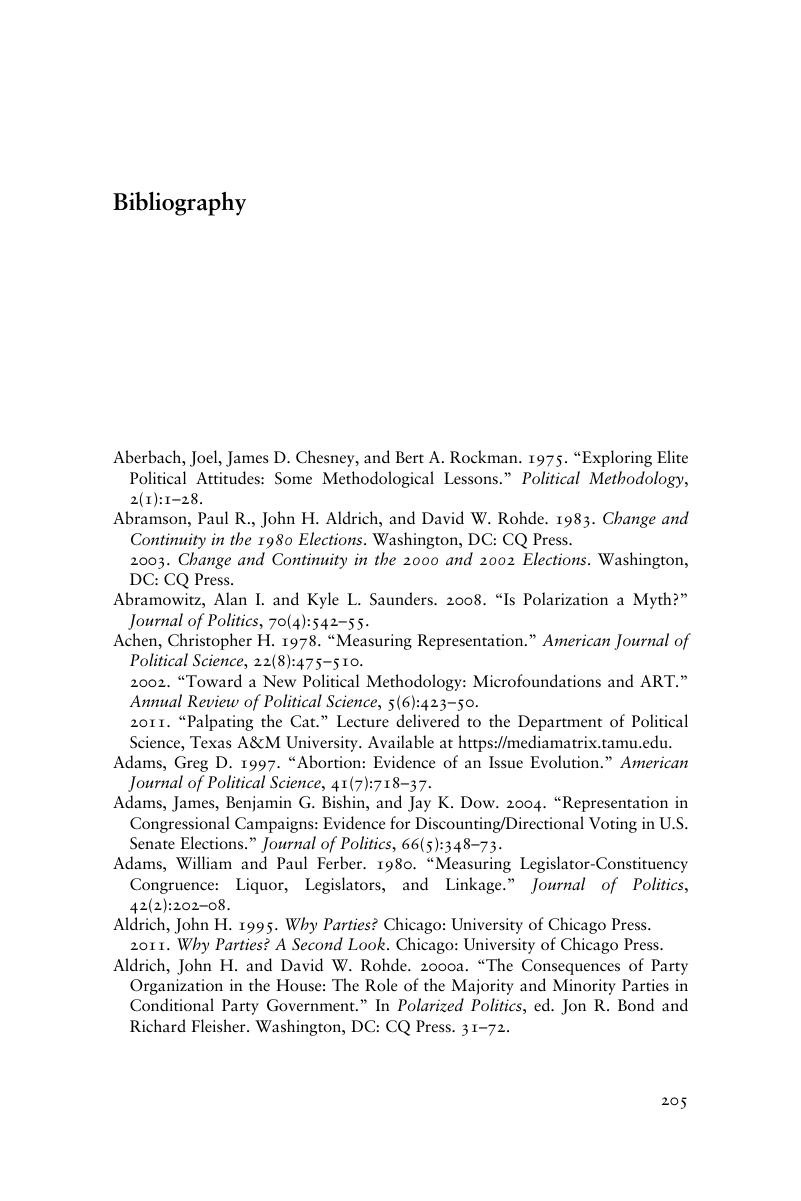Book contents
- Half title page
- Title page
- Copyright page
- Contents
- Preface
- 1 The Scientific Study of Constituency Representation
- 2 The Party Polarization and Issue Complexity Theory of Dyadic Representation
- 3 The Research Design and Data for the Principal Verification Tests for the Party Polarization and Issue Complexity Theory
- 4 Verification Tests for the Original Predictions about Patterns of Representational Linkage
- 5 Novel Implications of the Theory about Elections and Representation
- 6 Electoral Marginality and Constituency Representation: In Search of Theoretically Unified Findings
- 7 Conclusions, Implications, and Future Research
- Methodological Appendix
- Bibliography
- Index
- References
Bibliography
Published online by Cambridge University Press: 05 June 2015
- Half title page
- Title page
- Copyright page
- Contents
- Preface
- 1 The Scientific Study of Constituency Representation
- 2 The Party Polarization and Issue Complexity Theory of Dyadic Representation
- 3 The Research Design and Data for the Principal Verification Tests for the Party Polarization and Issue Complexity Theory
- 4 Verification Tests for the Original Predictions about Patterns of Representational Linkage
- 5 Novel Implications of the Theory about Elections and Representation
- 6 Electoral Marginality and Constituency Representation: In Search of Theoretically Unified Findings
- 7 Conclusions, Implications, and Future Research
- Methodological Appendix
- Bibliography
- Index
- References
Summary

- Type
- Chapter
- Information
- Representation in CongressA Unified Theory, pp. 205 - 218Publisher: Cambridge University PressPrint publication year: 2015



